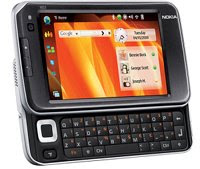WiMAX Market Status
Though in an embryonic stage at present, the mobile technology WiMAX is gradually picking up steam and is poised to become part of your personal gadgets like digital cameras, personal media players, and eventually mobile phones.
One indication for the WiMAX growth is the development in the WiMAX semiconductor market and the arrival of some new mobile platforms. According to tech market research firm IDC, WiMAX is entering its seminal year with more than 200 infrastructure deployments underway and a WiMAX-capable mobile PC platform expected from Intel in the second quarter.
With these developments in place and additional devices on the horizon, IDC expects worldwide WiMAX semiconductor revenue to reach nearly $480 million this year, growing to $1.2 billion in 2012.
The market is expected to gain further momentum with the release of Montevina platform, which is Intel’s first Centrino processor technology for notebooks to offer the option of integrated Wi-Fi and WiMAX wireless technologies for greater wireless broadband access.
One indication for the WiMAX growth is the development in the WiMAX semiconductor market and the arrival of some new mobile platforms. According to tech market research firm IDC, WiMAX is entering its seminal year with more than 200 infrastructure deployments underway and a WiMAX-capable mobile PC platform expected from Intel in the second quarter.
With these developments in place and additional devices on the horizon, IDC expects worldwide WiMAX semiconductor revenue to reach nearly $480 million this year, growing to $1.2 billion in 2012.
The market is expected to gain further momentum with the release of Montevina platform, which is Intel’s first Centrino processor technology for notebooks to offer the option of integrated Wi-Fi and WiMAX wireless technologies for greater wireless broadband access.

